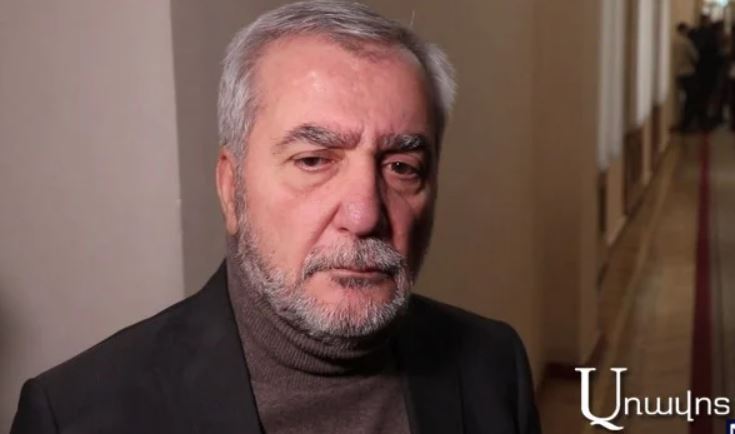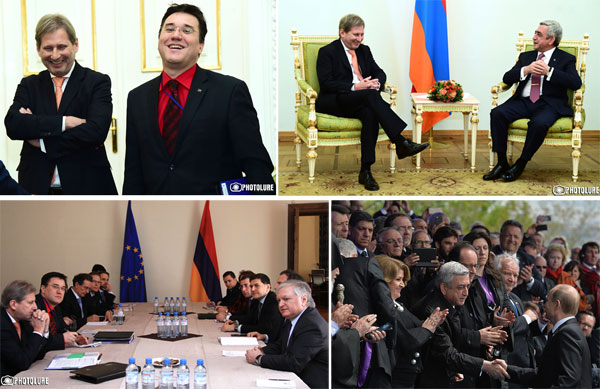Ahead to new price rises?
Armenian is starting to implement the Customs Union accession “road map”, which consists of 249 pages.
It is planned to implement 262 events, from which 150 is for the Armenian side, and the rest for joint implementation with the Eurasian Economic Commission. It is known that under the “road map” numerous legislative amendments should be exercised, amendments in international treaties already signed by Armenia. With respect to the CU accession, extensive legislative amendments must be implemented not only in the sector of customs and tax, but also in Armenia’s criminal and administrative codes.
Our country’s accession to the Customs Union implies a common customs tariffs and procedures with respect to third countries, in other words, Armenia will be deprived of the opportunity to independently regulate terms for trade with other countries beyond this Union.
Read also
Apart from the issue of compliance with the Constitution of Armenia, to what extent the norms defined by supranational structures are justified for our country, in what framework the decisions of supranational body may run counter to our country’s Constitution. And, how will these problems be resolved?
On these days, the representatives of the Government of Armenia present some information that are already indicate that in the case of Customs Union accession new price rises are expected in Armenia, that the price of about 60 percent of goods imported to Armenia will go up. A few days ago, Garegin Melkonyan, the first Deputy Minister of Economy, announced that from now on the Customs Union will conduct trade negotiations with the EU instead of Armenia, and added that the Customs Union rates, by the nominal list of commodities of the Customs Code, include 11 553 line items, and as said by Garegin Melkonyan, higher customs rates on about 60 per cent of mentioned items operate in the Customs Union than in Armenia, whereas on 14.5 percent of items it is lower, and on 17 percent it is the same. Actually, the Ministry of Economy has the list of commodities whose shipment to Armenia after the CU membership would be taxed by additional customs duties. There is information there that the process for food, medication, and many everyday household goods will go up.
Of course, counterclaims are voices that there are goods that will be cheaper, and if there will be some price rise in some sector, they are merely related to tax and customs policies, however, they will be compensated with obvious benefits in other sectors, said the Chair of National Assembly’s Foreign Affairs Standing Committee, Artak Zakaryan.
However, it is clear that if Armenia will be defining common customs tariffs towards the third countries, then a question arises as to what is expected, for example, in the case of Karabakh. Is Armenia going to raise the customs duties on goods imported from NK? Or, NK will be included in the Customs Union? The issue of Georgian products is also uncertain, because Georgia will not be joining the Customs Union, consequently, the customs duties on the goods imported from Georgia will also be raised, and Georgia, in its turn, may apply to a counter action by increasing the customs duties on goods imported from Armenia.
It is also interesting that Armenia will be implementing more than two hundred events of the “road map”, including various analyzes and experts’ funding, at the expense of its state budget, in fact, it will not receive financial support from the Customs Union, while the EU was going to finance the entire process necessary for the whole preparation and transition phase if Armenia was to initialing the EU Association Agreement. Now, plus new budget expenditures.
In addition, the official data. NSS of Armenia published “Consumer Price Index in the Republic of Armenia” report, according to which, compared with 2010, in 2013 the overall inflation rate was 18.8 per cent. Especially, the inflation for food was rather remarkable – 21.7 per cent, clothing and footwear inflation – 22.2 percent, healthcare service and medication – 28.8 percent. Compared with 2012, the previous year’s inflation rate was 5.8 percent.
As you see, the Government of Armenia is going to face quite difficult days in the near future. As to how they are going to explain or justify the expected price rises to the public, or how they will be try to counteract the possible public complaints, indeed, it is hard to imagine.
Emma GABRIELYAN





















































